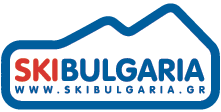Mountain safety
Important things you should consider when skiing and snowboarding in Bulgaria. Mountain safety advise for skiing and snowboarding in Bulgaria.
Mountain safety
Some important things you should consider when skiing and snowboarding in Bulgaria.
If you are about to practice some sports activity in Bulgarian mountains, please have in mind the following:
-the Mountain Rescue Service (telephone numbers: +359 48 1843; +359 88 1470; +359 2 9632000) does not have the actual possibility to use helicopters and other highly technical devices in rescue operations. Sometimes (when there are roads or not very steep slopes on the road to the accident) they may use snowmobiles. RECCO system is not supported by them! Most of the avalanche beacons of the rescue service work on 2275Hz. They will use 457kHz beacons in search of avalanche victims only if it is known that the victim has such a beacon (which means that it is useful to warn the local rescue service that you use such beacons before traveling and discuss the situation with them). For location of victims the most used method is by probing and if it is possible to take dog to the place of the accident - with dogs.
-there are NO Avalanche Hazard Reports
-the mountain climate in Bulgaria is very specific. It is formed under the strong influence of moist Mediterranean masses (coming with warm and extremely strong S and SW winds) and cold Atlantic masses (coming with W and NW strong winds). So it is common to have a few warm days (even with rain showers) followed by heavy snowfalls and drop of temperatures. After such situations fresh powder often lies on very hard crust. Predominating winds in winter are W and NW. They often form thick slabs. According to our experience most dangerous are E and S slopes (hard slabs on icy crust after strong winds). Very dangerous are the upper and steepest parts of gullies, where often there are cornicles and slabs. At the beginning of spring, at the time of the first strong warming-up (usually about the middle of April) on many slopes fall wet avalanches. Typical sign of the increased snow instability is lack of any support from the snow (sinking very deep when traveling)). After this period high in the mountains is formed firm and hard spring snow, which is very good for skiing.
-The services of the Mountain Rescue Service in Bulgaria are paid from the beginning of 2001. Prices vary from 100 EURO (short transport of person with broken leg..) to more than 500 EURO (avalanche rescue operations)
Having in mind all the mentioned above we would like to advise you the following:
1. Ski, snowboard or travel in Bulgarian mountains with a local person with very good knowledge of local conditions.
2. Always carry rescue equipment, make avalanche tests, ski safely and be ready to perform a rescue operation by yourself.
3. Make sure you have an insurance that covers all rescue expenses abroad.
4. Always negotiate prices before traveling drivers of vans and taxis are notorious for trying to cheat their clients.
5. We recommend contacting a local company and discussing trip plans before arrival in Bulgaria. You may get some useful tips.
6. And at last - skiing in Bulgaria can be great. Not very much skiers and snowboarders ride outside the ski runs, so powder is not spoiled quickly. Usually you are The First on The Slope.
Below are some important rules that you have to consider:
1. Respect the others on the piste. Behave in such manner to avoid any possible damage to other skiers.
2. Control your speed while skiing. Try to keep control at all time. Try to move according to your personal skills and abilities, and according to the weather and terrain conditions.
3. Choose a trajectory. When skiing downhill choose your own trajectory on the slope to avoid any collision with the person in front of you.
4. When overtaking other skiers: It is allowed to overtake other skiers/boarders from any direction provided that the movements of the skier being overtaken are not hampered in any way.
5. Duties of the skier below or crossing the trail: When entering/crossing a trail or starting downhill, yield to other skiers.
6. Stops along the trail: You must not stop where you obstruct a trail or are not visible from above. If you fall clear the trail as soon as possible.
7. When walking up a trail: Keep the edge of the slope. In case of bad visibility keep off the trail. The same applies to the skier walking down the trail.
8. Respect of signs: Every skier must pay attention and respect all signs along the slope.
9. In case of collision: All skiers who witness a collision, must promptly notify the ski patrol by reporting the accident at the nearest lift terminal.
10. Obligation to notify one's identity: Every skier involved in a collision or witness of a collision must in any case stop and remain at the scene of the accident providing name and current address to ski patrol before leaving.
Рбсбкблю, гсЬшфе учьлйп гйб фп mountain safety in Bulgaria.
Бхфь иб мбт впзиЮуей нб кблхфесеэупхме фп ресйечьменп фзт уелЯдбт мбт.
- КЬнфе ксЬфзуз укй дйбкпрюн уфзн ВпхлгбсЯб
- ПйкпгенейбкЭт укй дйбкпрЭт уфзн ВпхлгбсЯб
- All Inclusive укй дйбкпрЭт уфзн ВпхлгбсЯб
- Укй учплЮ гйб рспчщсзмЭнпхт уфзн ВпхлгбсЯб
- ПмбдйкЭт укй дйбкпрЭт уфзн ВпхлгбсЯб
- РплхфелеЯт дйбкпрЭт уфзн ВпхлгбсЯб
- УчплйкЭт укй дйбкпрЭт уфз ВпхлгбсЯб
- Укй дйбкпрЭт уфп МрЬнукп
- Укй дйбкпрЭт уфп Рбмрьспвп
- Укй дйбкпрЭт уфп Мрьспвефт
- Укй дйбкпрЭт уфп ФуерелЬсе

 En
En
 Ru
Ru
 Gr
Gr
 Ro
Ro
